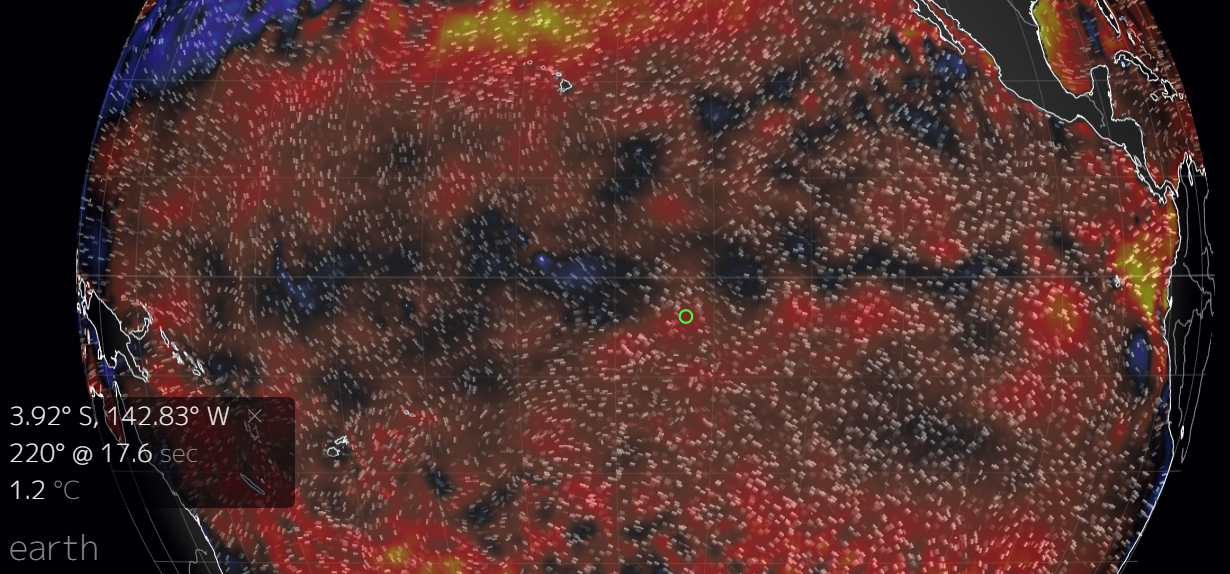Some Cooling For GBR From Debbie, But Not Enough; New El Nino For Other Pacific Reefs
The last global coral bleaching event that inflicted a degree of damage comparable to the one we are now experiencing occurred during 1997 through 1999. Back then, global annual surface temperatures hit a peak of 0.85 degrees Celsius hotter than 1880s averages and ocean temperatures in many regions hit a range of 29-30 C or more. This warming-spurred event generated never-before seen wreckage among the world’s corals.
 ?w=632&h=295
?w=632&h=295
(Pacific Ocean sea surface temperatures are again warming as the Equatorial region progresses toward a predicted 2017 El Nino. Sea surface temperature anomalies of 1-2 C above average are now very widespread with embedded hot spots that contain 2-4 C above average temperatures [see above map]. These anomalies are enough to continue a global coral bleaching event that has now lasted for four years. Image source: Earth Nullschool.)
In 2014, annual average global temperatures began to exceed 0.9 C above 1880s values before climbing to a 1.06 C departure in 2015 and a 1.2 C departure in 2016. This surface warming — spurred in part by increasingly warm surface waters — set off a coral bleaching event that has now lasted four years. An event that presently has no end in sight. One that is now considerably worse than the 1997-1999 bleaching in a number of key measures.
During 2017, ocean surface temperatures are again expected to warm as a weak-to-moderate El Nino is predicted to form. Meanwhile, global surface temperatures will likely remain in a range of 1.1 to 1.3 C above 1880s values for the year. As a result, global coral bleaching is still very widespread and is expected to continue for the foreseeable future.
 ?w=1200&h=438
?w=1200&h=438
(Considerable coral bleaching is predicted for the next four months in NOAA’s Coral Reef Watch report.)
According to NOAA’s Coral Reef Watch:
…in the central equatorial Pacific, bleaching heat stress continues to build. The Austral Islands are now at Alert Level 2 bleaching stress (associated with widespread coral bleaching and significant mortality), and the Southern Cook Islands are at Alert Level 1 (associated with significant coral bleaching) – with an expected escalation to Alert Level 2 stress in the next 1-4 weeks. Alert Level 2 conditions are also expected in the Northern Cook Islands, the Samoas, Wallis & Futuna, Northern Tonga, Southern Tonga, the Tuamotu Archipelago, the Society Archipelago, the Pitcairne Islands, and Easter Island, Chile in the next 1-4 weeks. Alert Level 1 bleaching stress is anticipated in the Southern Line Islands, Tuvalu, and the Marquesas Islands in the next 5-8 weeks.
EDIT
https://robertscribbler.com/2017/04/08/global-coral-bleaching-update-seychelles-in-danger-as-great-barrier-reef-cools/#comments
 ?w=632&h=295
?w=632&h=295
 ?w=1200&h=438
?w=1200&h=438